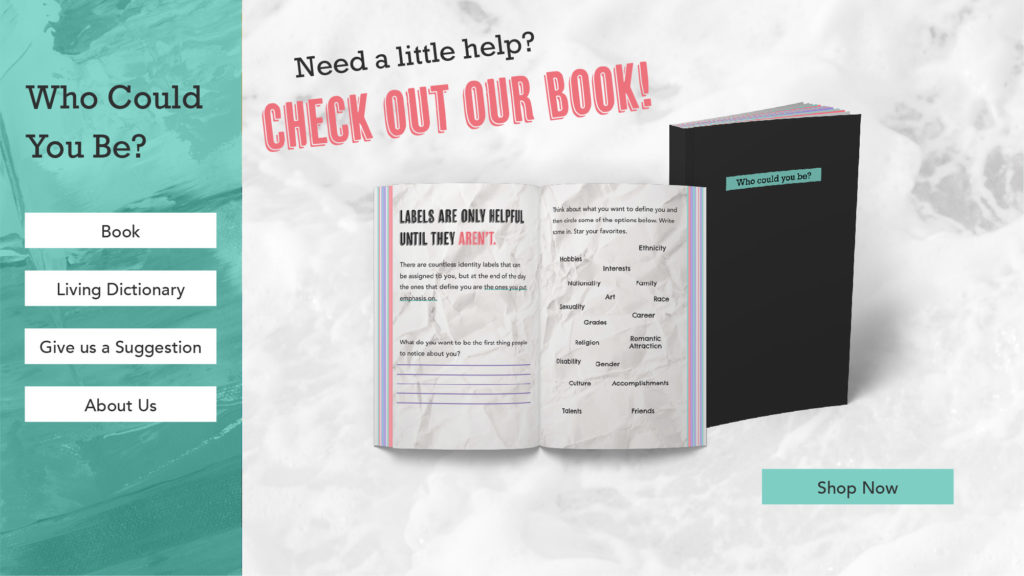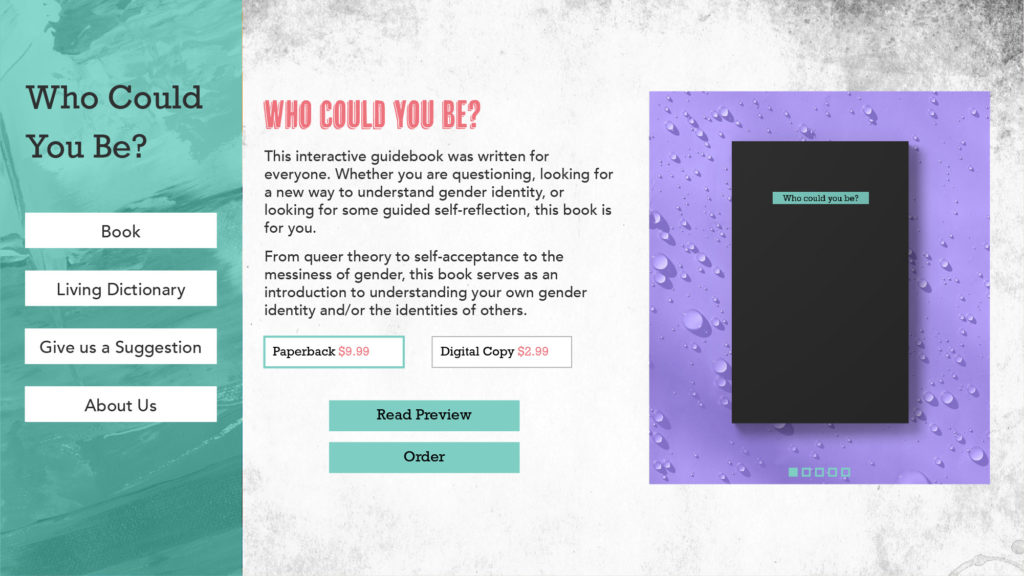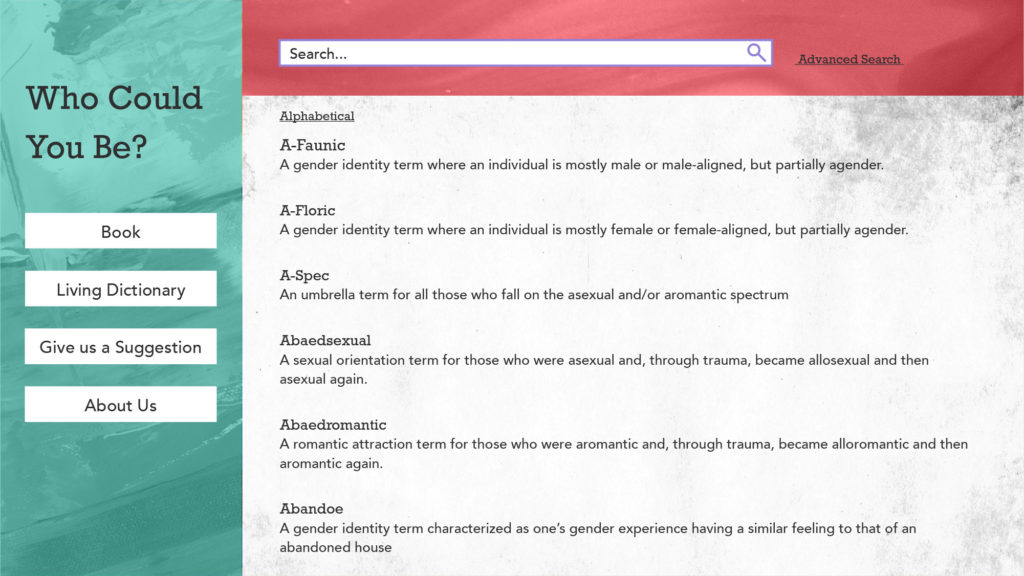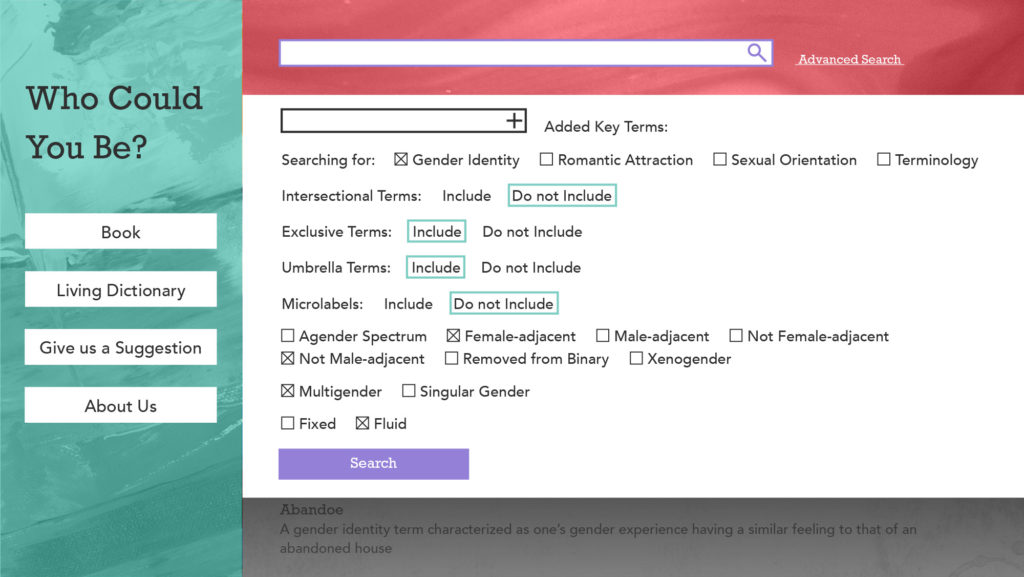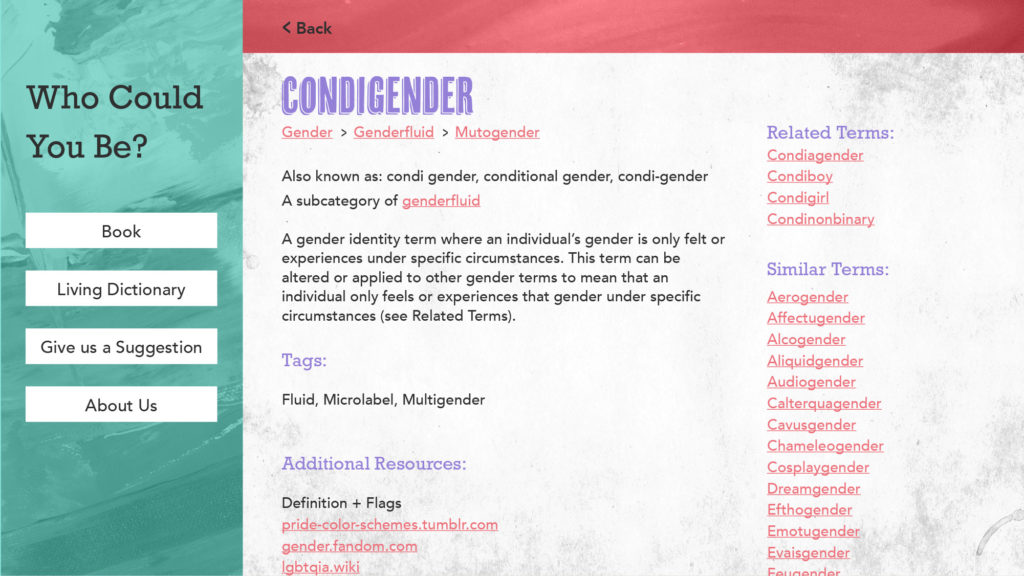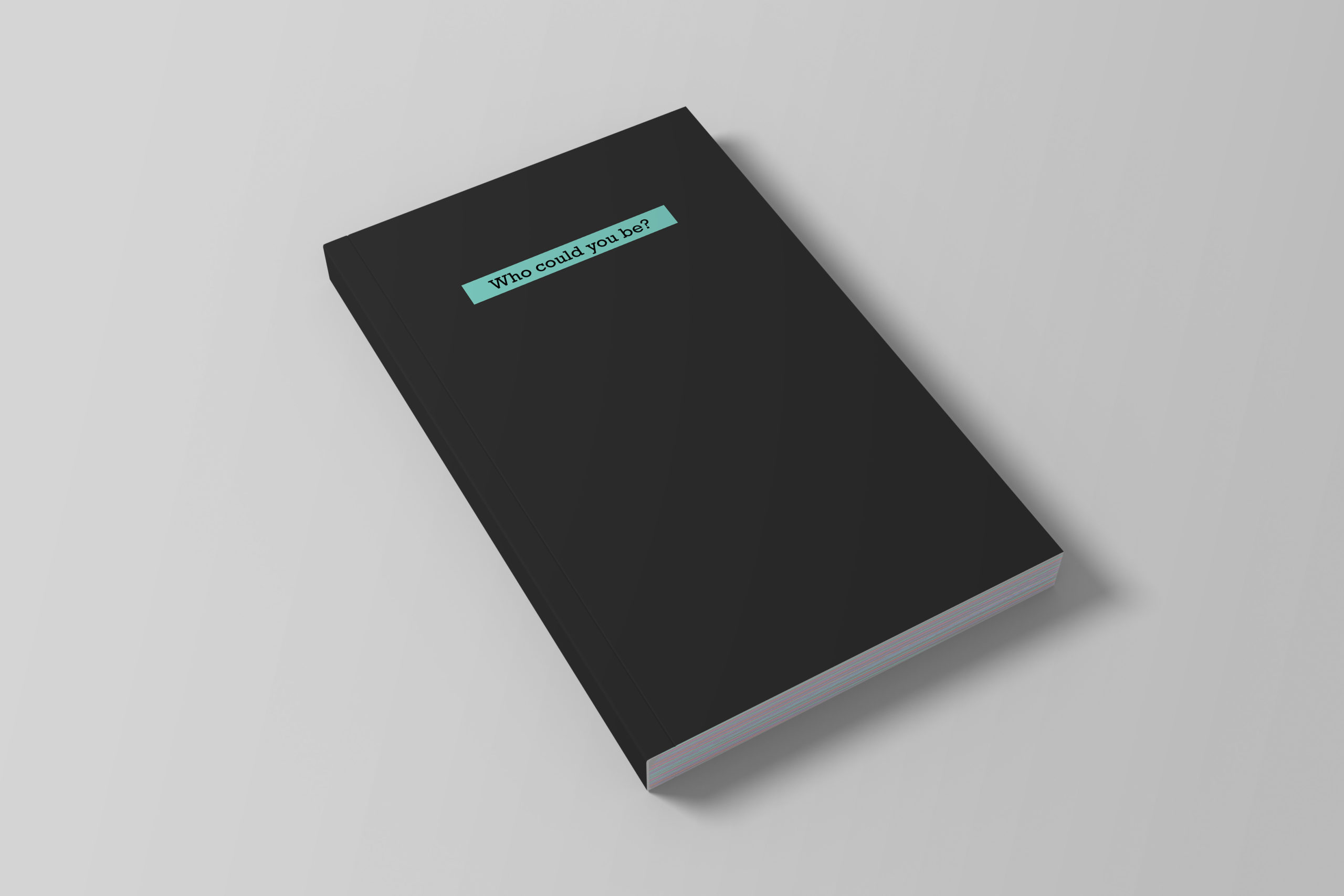Who Could You Be?
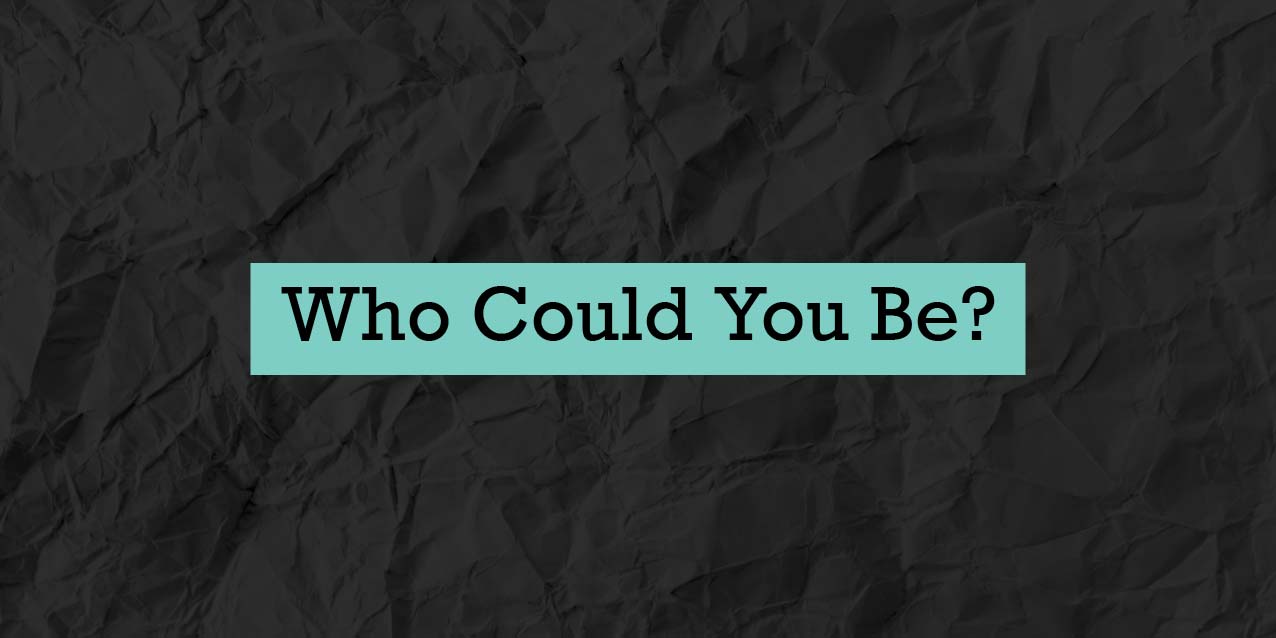
The Problem
In our society, we have a lot of ideas surrounding gender that complicate how we view ourselves and others. There are ideas on how bodies should be, how people should present, how we should feel, etc. With so many expectations, it can be daunting to explore gender and I decided to focus my final project in on that difficulty.
After much deliberation, I settled on my question:
What kind of obtainable resource would be most effective in inspiring self-reflection on gender through introducing queer theory, deconstructing gender, and encouraging self-acceptance?
Success Statement
My project will be successful if even one person walks away with a new or more comprehensive way of thinking about gender.
Target Audience
My main target audience is people who are questioning their gender, however I kept my branding and messaging broad to incorporate people who are on the verge of questioning or who may begin with a little nudge.
Research
Target Audience Interviews
I reached out to people who already identified as not-cis and asked them a series of questions about their experience questioning their gender, with an emphasis on the resources that were helpful or detrimental to them. I had three main findings.
- Gender exploration is not something that necessarily has an end goal or ever has to end.
- There was a want for a resource that emphasized the emotional, feeling-oriented side of gender identity exploration.
- There was an interest in having an easier way of searching for gender-identity terms.
Subject Matter Expert Interviews
I met with three scholars at Miami University who specialized in Gender Theory and/or Queer theory. We discussed their take on resources, how to avoid obvious mistakes I could make, and pre-existing work I should look to for inspiration. They had several suggestions that I kept in mind.
- I should make a resource that is open-ended and accessible, so that people can take what they want from it and leave what they don’t.
- Since terminology is constantly changing, any definitions would benefit from the ability to be updated or altered
- There must be a distinction between ideas in theory and ideas in practice.
Picture Card Interviews
For this round, I provided each interviewee with a series of pictures and words. First, I had them organize the items into two categories: what they would and what they wouldn’t want to see in a gender exploration resource. Then, I had them design an idea for a resource (including its tone, color, art style, and form) from the items I provided them (except for one interviewee that wrote in a few of their own words). I asked questions when appropriate to get a general idea about why they organized things as they did.
- Interviewees repeatedly suggested a lighthearted, bright colored resource.
- There was also a general preference for information that was rigid and specific over information that was loose and open to interpretation.
- Visually depicting a person in the resource would intrinsically imply how someone of that identity would or should look.
Design Process + Testing
The bulk of the process was writing, basing the content off my interview insights and baseline queer theory. Once the first draft was written, I moved it into an Adobe XD file to block out what content would fall on what page, what content would be made bigger, and what content would be supplemented with graphs/imagery. My next step was to decide how textures would be incorporated, which I decided t use to add a level of visual interest without sacrificing the typical form of a book. Color, graphs, and typography followed swiftly.
To test out my design, I printed one of the interactive spreads, along with the informational pages that went with it, and gave them to five separate participants to gauge their responses. I chose the pages I was most uncertain about, but I was pleasantly surprised by the positive feedback I received. The main critique I got was that the participants wanted more space designated for self-reflection.
Design Solution
